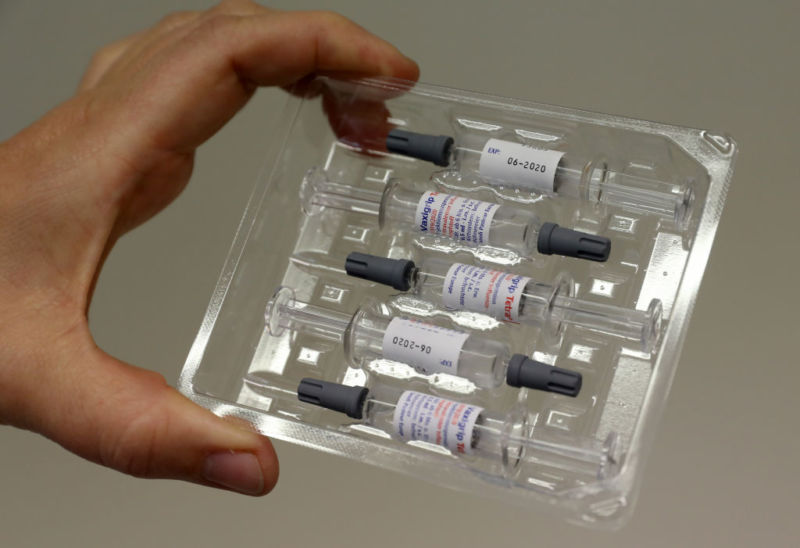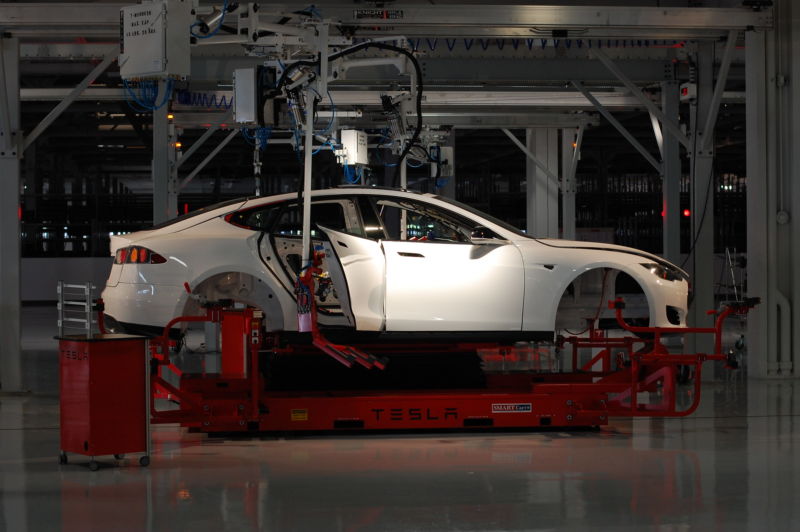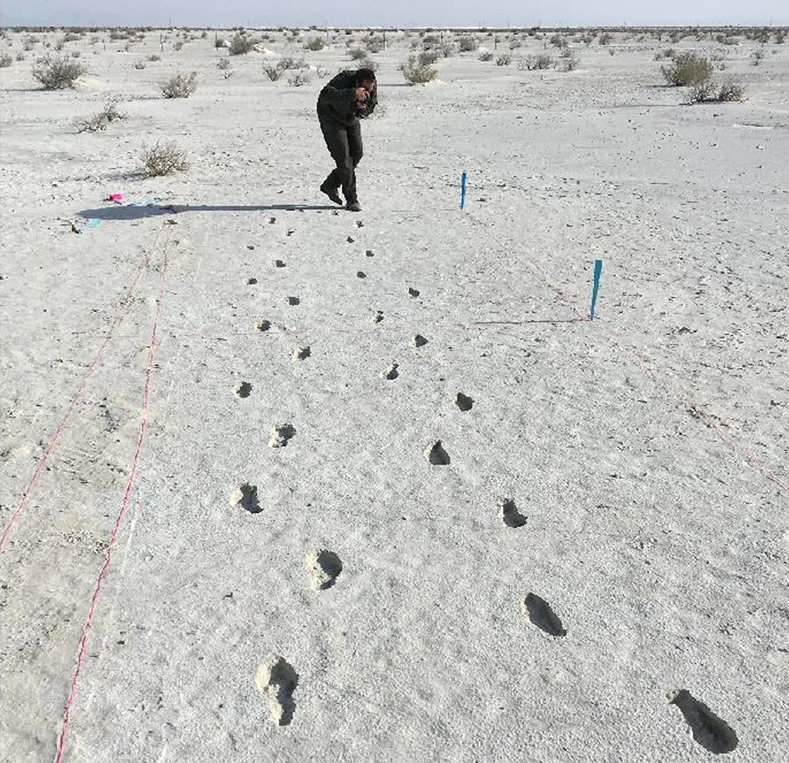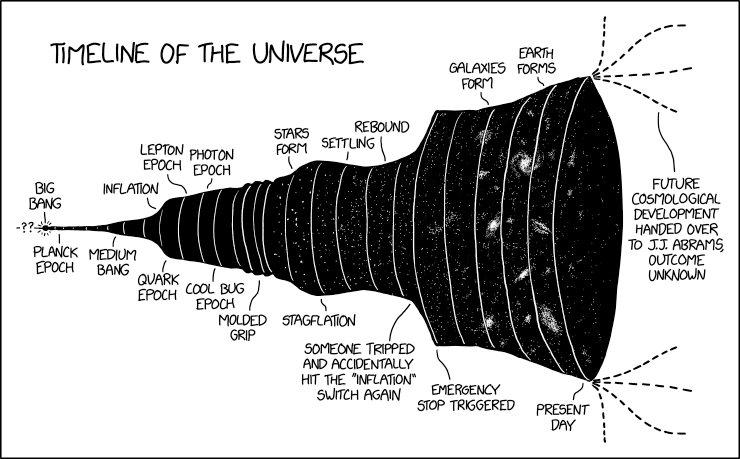Read more of this story at Slashdot.
Hugo Pereira
Shared posts
Shopify CEO Says Long Hours Aren't Necessary For Success
Alone In A Crowded Milky Way
Read more of this story at Slashdot.
Injecting the flu vaccine into a tumor gets the immune system to attack it

Enlarge (credit: picture alliance/Getty Images)
A number of years back, there was a great deal of excitement about using viruses to target cancer. A number of viruses explode the cells that they've infected in order to spread to new ones. Engineering those viruses so that they could only grow in cancer cells would seem to provide a way of selectively killing these cells. And some preliminary tests were promising, showing massive tumors nearly disappearing.
But the results were inconsistent, and there were complications. The immune system would respond to the virus, limiting our ability to use it more than once. And some of the tumor killing seemed to be the result of the immune system, rather than the virus.
Now, some researchers have focused on the immune response, inducing it at the site of the tumor. And they do so by a remarkably simple method: injecting the tumor with the flu vaccine. As a bonus, the mice it was tested on were successfully immunized, too.
Why killer whales—and humans—evolved menopause

Enlarge / Southern Resident killer whales, an endangered population that recently lost the oldest known grandma orca to date. (credit: NOAA Fisheries West Coast)
There's a rare human trait that doesn't often make it into debates about what makes our species unique: menopause. Humans are among just a handful of species where females stop reproducing decades before the end of their lifespan. In evolutionary terms, menopause is intriguing: how could it be advantageous for reproductive ability to end before an individual's life is over?
One possible answer: the power of the grandma's guidance and aid to her grandchildren. A paper in PNAS this week reports evidence that supports this explanation, showing that killer whale grandmas who have stopped reproducing do a better job of helping their grandchildren to survive than grandmothers who are still having babies of their own.
It’s not all about the babies
The engine of evolution is offspring. In simple terms, the more babies you have that survive, the more your genes are passed on, and the better the chance of the long-term survival of those genes.
ICANN Delays .Org Sale Approval, Calls For More Transparency
Read more of this story at Slashdot.
Raspberry Pi Foundation Sells Its 30,000,000th Raspberry Pi
Read more of this story at Slashdot.
This 3D-printed Stanford bunny also holds the data for its own reproduction
Courtesy ETH Zurich.
It's now possible to store the digital instructions for 3D printing an everyday object into the object itself (much like DNA stores the code for life), according to a new paper in Nature Biotechnology. Scientists demonstrated this new "DNA of things" by fabricating a 3D-printed version of the Stanford bunny—a common test model in 3D computer graphics—that stored the printing instructions to reproduce the bunny.
DNA has four chemical building blocks—adenine (A), thymine (T), guanine (G), and cytosine (C)—which constitute a type of code. Information can be stored in DNA by converting the data from binary code to a base 4 code and assigning it one of the four letters. As Ars' John Timmer explained last year:
Once a bit of data is translated, it's chopped up into smaller pieces (usually 100 to 150 bases long) and inserted in between ends that make it easier to copy and sequence. These ends also contain some information where the data resides in the overall storage scheme—i.e., these are bytes 197 to 300. To restore the data, all the DNA has to be sequenced, the locational information read, and the DNA sequence decoded. In fact, the DNA needs to be sequenced several times over, since there are errors and a degree of randomness involved in how often any fragment will end up being sequenced.
DNA has significantly higher data density than conventional storage systems. A single gram can represent nearly 1 billion terabytes (1 zettabyte) of data. And it's a robust medium: the stored data can be preserved for long periods of time—decades, or even centuries. But using DNA for data storage also presents some imposing challenges. For instance, storing and retrieving data from DNA usually takes a significant amount of time, given all the sequencing required. And our ability to synthesize DNA still has a long way to go before it becomes a practical data storage medium.
Study that argued EVs aren’t cleaner gets an update

Enlarge (credit: Maurizio Pesce / Flickr)
There are people who object to newfangled technologies that address our reliance on dirty energy. For them, claims like this are irresistible catnip: electric vehicles aren't actually cleaner than their gas-burning counterparts. What a delicious I-told-you-so to those naïve environmentalists! The only problem with these claims is that they aren't true.
This particular assertion is based on the idea that the manufacturing of big batteries for these cars generates so much emissions that all later savings are canceled out. Sometimes, this argument requires unfair assumptions, like expecting an internal combustion vehicle to last far longer than an EV. But it always requires cherry-picking a high estimate for battery manufacturing emissions.
One of those estimates came from a 2017 study from the IVL Swedish Environmental Research Institute. Based on the data that it had to work with, the institute's study put the emissions at 150-200 kilograms of CO2 per kilowatt-hour of lithium-ion battery capacity—one of the highest estimates that has been published.
Radar reveals ghostly footprints at White Sands

Ground-penetrating radar could help archaeologists spot otherwise invisible ancient footprints, suggests a recent experiment at White Sands National Monument, New Mexico.
Tracks left behind in layers of hardened mud and sand at the site record where humans crossed paths with giant sloths and mammoths during the last Ice Age. But some of the tracks appear only when conditions are just right—usually after a rain—which makes them difficult to study. Archaeologist Thomas Urban of Cornell University and his colleagues used ground-penetrating radar to spot these so-called ghost tracks. The radar images also revealed layers of compressed sediment beneath mammoth tracks, which could reveal information about how the now-extinct woolly giants strode across the Pleistocene world.
Invisible ink
To test the method, Urban and his colleagues pulled a radar antenna across the pale gypsum sands of the former lakeshore, pacing out a grid pattern over a site where, 12,000 years ago, a human and a mammoth crossed paths. Excavations at the site had already revealed “ghost prints” left by a person who walked north, and then back south, for about 800 meters (2,625 feet).
Brother of Drug Lord Pablo Escobar Launches 'Unbreakable' Foldable Smartphone
Read more of this story at Slashdot.
Astronomers Have Now Photographed A Second Interstellar Comet
Read more of this story at Slashdot.
webOS on Raspberry Pi 4

Surprisingly enough, I had zero idea this was going on.
Using the Pi 4 as a reference platform is interesting, but I wonder if I could get it to work on older boards (with the touch screens I have lying around) to build a home automation console…
Support this site
